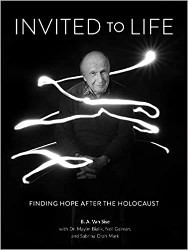By
– December 2, 2011
Professor Morris provides significant insights into the photographic art and documentary projects of the imposing photographers discussed in his ten essays. He is sure-handed in surveying their technical and thematic range, keeping his critical language accessible even while projecting an authoritative, scholarly voice. However, the effort of dealing with the Jewish factor is strained and oddly reductive.
Morris notes, over and over again, the social consciousness of these image makers and their concern with the human condition at the margins. The homeless, the dispossessed, the marginalized subjects of their documentary projects are relentlessly tied to the ostensible outsider identity of the photographers, a status that is a consequence of their Jewishness – by definition. (Annie Liebovitz’s celebrity gallery is an exception here, although the show business world her best-known work explores is also considered a Jewish cultural product.)
It could just as well be that people on one side of a camera are almost invariably outsiders to the subject communities they approach and record.
Morris’s study, then, succeeds best as a series of essays and not so well as a thesis-mongering whole. Aside from Liebovits, Arthur Fellig (Weegee), Bruce Davidson, Jim Goldberg, Mel Rosenthal, Diane Arbus, Lee Friedlander, Allen Ginsberg, Tyagan Miller, Marc Asnin, and Mary Ellen Mark are at the center of these passionately wrought essays. Illustrations, index, introduction, works cited.
Morris notes, over and over again, the social consciousness of these image makers and their concern with the human condition at the margins. The homeless, the dispossessed, the marginalized subjects of their documentary projects are relentlessly tied to the ostensible outsider identity of the photographers, a status that is a consequence of their Jewishness – by definition. (Annie Liebovitz’s celebrity gallery is an exception here, although the show business world her best-known work explores is also considered a Jewish cultural product.)
It could just as well be that people on one side of a camera are almost invariably outsiders to the subject communities they approach and record.
Morris’s study, then, succeeds best as a series of essays and not so well as a thesis-mongering whole. Aside from Liebovits, Arthur Fellig (Weegee), Bruce Davidson, Jim Goldberg, Mel Rosenthal, Diane Arbus, Lee Friedlander, Allen Ginsberg, Tyagan Miller, Marc Asnin, and Mary Ellen Mark are at the center of these passionately wrought essays. Illustrations, index, introduction, works cited.
Philip K. Jason is professor emeritus of English at the United States Naval Academy. A former editor of Poet Lore, he is the author or editor of twenty books, including Acts and Shadows: The Vietnam War in American Literary Culture and Don’t Wave Goodbye: The Children’s Flight from Nazi Persecution to American Freedom.





